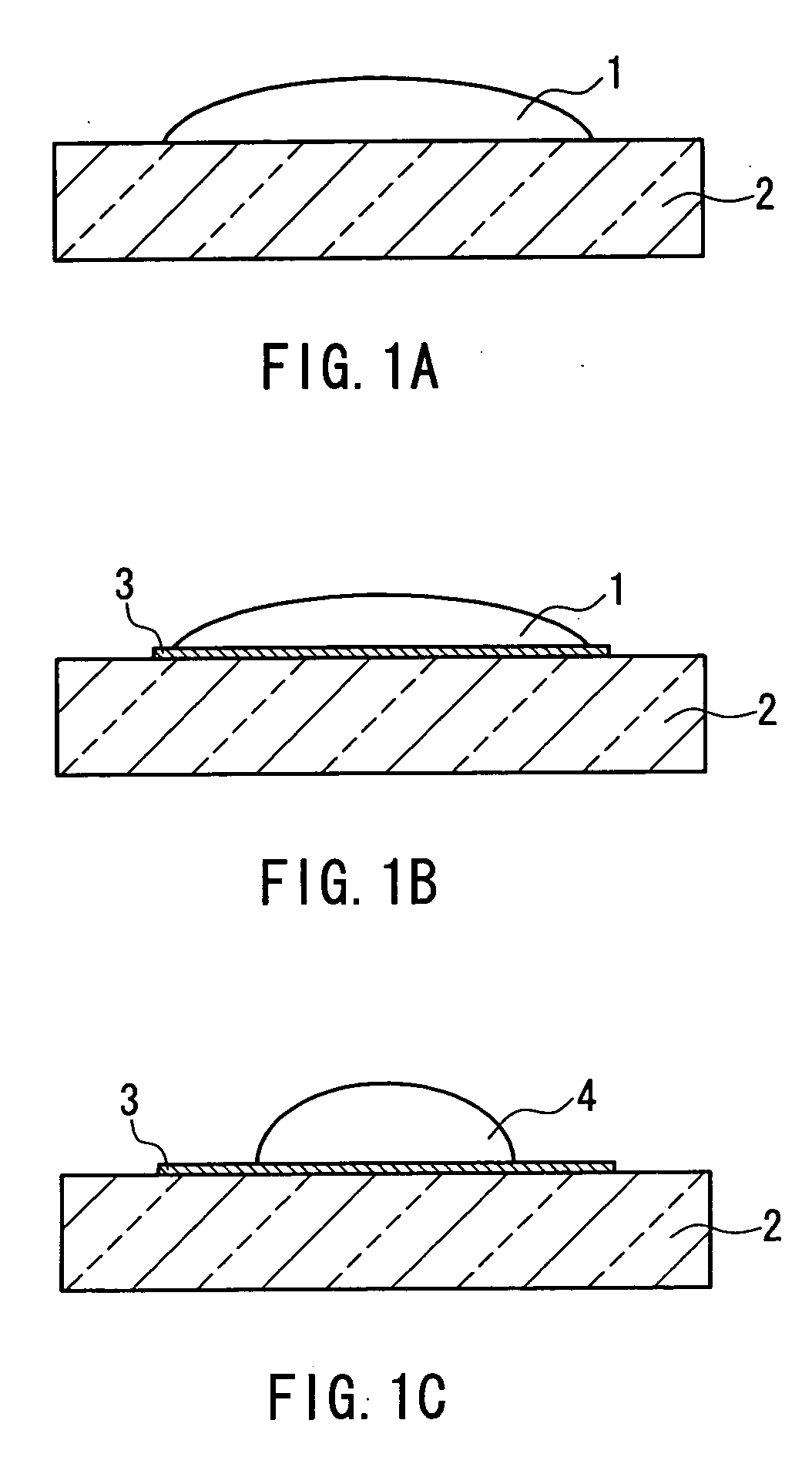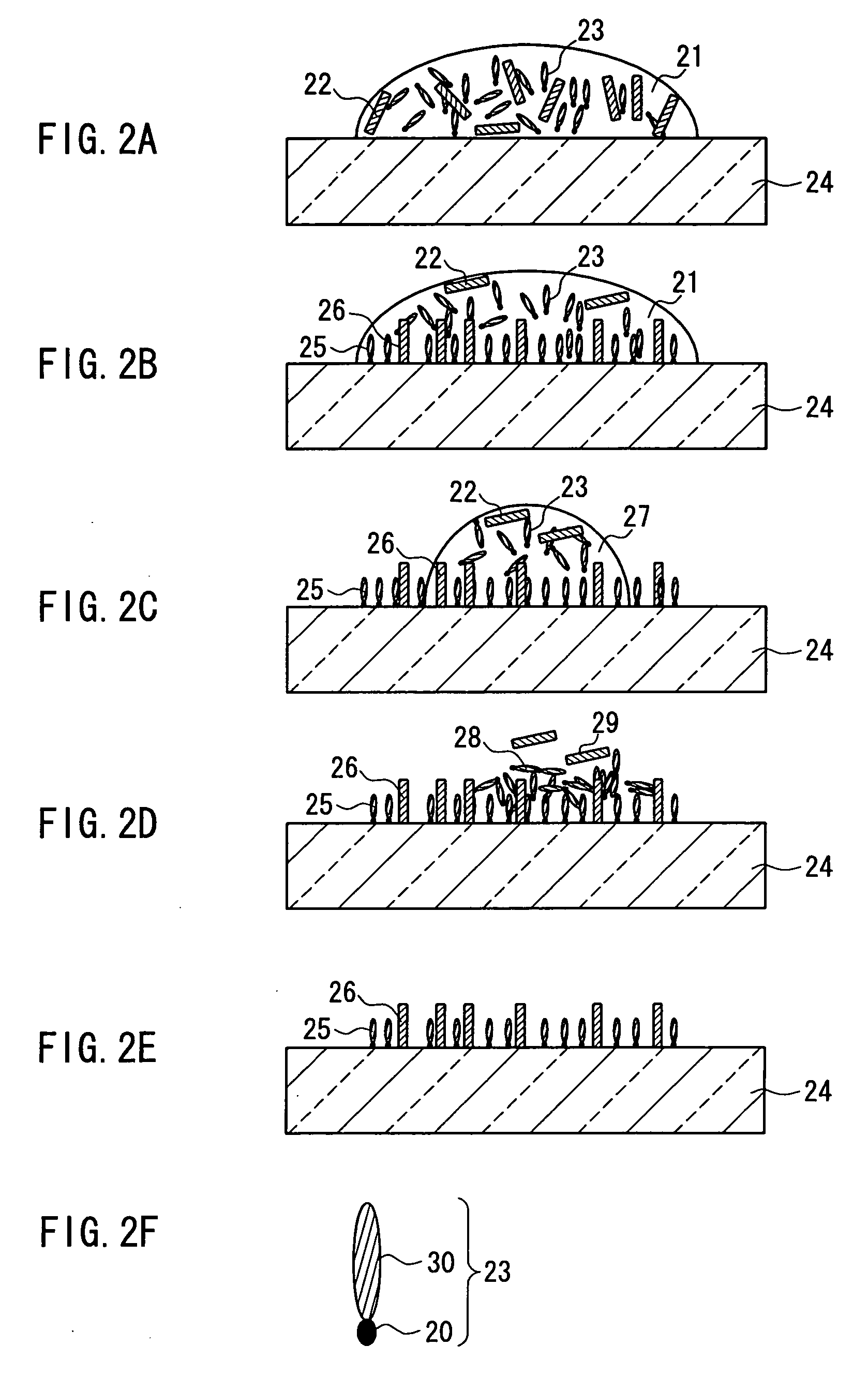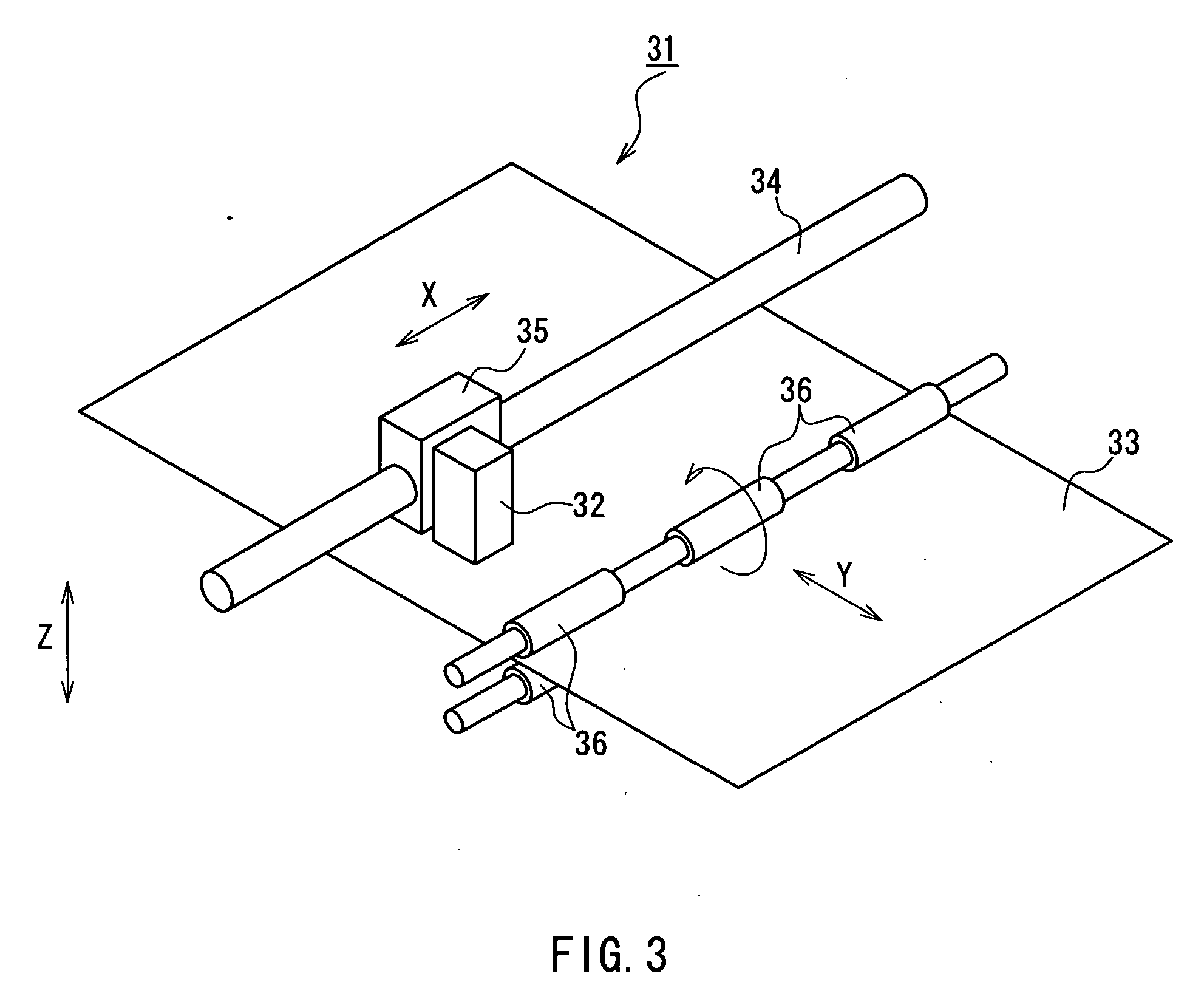Process for manufacturing biochip, probe solution, and biochip
a biochip and probe solution technology, applied in the field of biochip manufacturing, can solve the problems of reducing the density of the dna probe region on the substrate, limiting spreading or bleeding on the substrate, etc., to achieve the effect of suppressing the spread and bleeding of the solution, reducing the number of spots of the dna probe solution allowed to be placed on the dna chip
- Summary
- Abstract
- Description
- Claims
- Application Information
AI Technical Summary
Benefits of technology
Problems solved by technology
Method used
Image
Examples
example 2
[0156] DNA chips were manufactured and evaluated in the same manner as in Example 1 except that the DNA chip substrates of the thus manufactured DNA chips were washed with a mixed solution of pure water and ethanol (volume ratio: 8 to 2).
[0157] The results show that, similarly to the DNA chips in Example 1, the DNA chips in Example 2 were preferable since the probe solution did not spread or bleed on the substrate and the DNA probes were fixed, and the DNA chips were resistant to contamination. Furthermore, the fluorescence intensities of the DNA chips in Example 2 were greater by about 10% than those of the DNA chips in Example 1 irrespective of the pretreatment before the hybridization. The reason is considered to be that the molecules having fluoroalkyl chains adsorbed onto the monomolecular film were removed by the washing with the mixed solution of pure water and ethanol, and thus the hybridization between the targets and the DNA probes became easier.
example 3
[0158] DNA chips were manufactured and evaluated in the same manner as in Example 1 except that the probe solution was prepared by dissolving 0.3 ml of CF3(CF2)5C2H4Si(OCH3)3 in 100 ml of a mixed solution of ethanol and pure water (volume ratio: 7 to 3), the pH being adjusted to 5.0 with a use of HCl, and dissolving the DNA probes in order to make a 20 wt % solution.
[0159] The results show that, similarly to the DNA chips in Example 1, the DNA chips in Example 3 were preferable since the probe solution did not spread or bleed on the substrate and the DNA probes were fixed, and the DNA chips were resistant to contamination.
example 4
[0160] DNA chips were manufactured and evaluated in the same manner as in Example 1 except that the probe solution was prepared by dissolving 0.3 ml of CF3(CF2)5C2H4Si(OCH3)3 in 100 ml of a mixed solution of ethanol and pure water (volume ratio: 7 to 3), the pH being adjusted to 9.0 with a use of NaOH, and dissolving the DNA probes in order to make a 20 wt % solution.
[0161] The results show that, similarly to the DNA chips in Example 1, the DNA chips in Example 4 were preferable since the probe solutions did not spread or bleed on the substrates and the DNA probes were fixed, and the DNA chips were resistant to contamination.
PUM
| Property | Measurement | Unit |
|---|---|---|
| diameter | aaaaa | aaaaa |
| time | aaaaa | aaaaa |
| temperature | aaaaa | aaaaa |
Abstract
Description
Claims
Application Information
 Login to view more
Login to view more - R&D Engineer
- R&D Manager
- IP Professional
- Industry Leading Data Capabilities
- Powerful AI technology
- Patent DNA Extraction
Browse by: Latest US Patents, China's latest patents, Technical Efficacy Thesaurus, Application Domain, Technology Topic.
© 2024 PatSnap. All rights reserved.Legal|Privacy policy|Modern Slavery Act Transparency Statement|Sitemap



